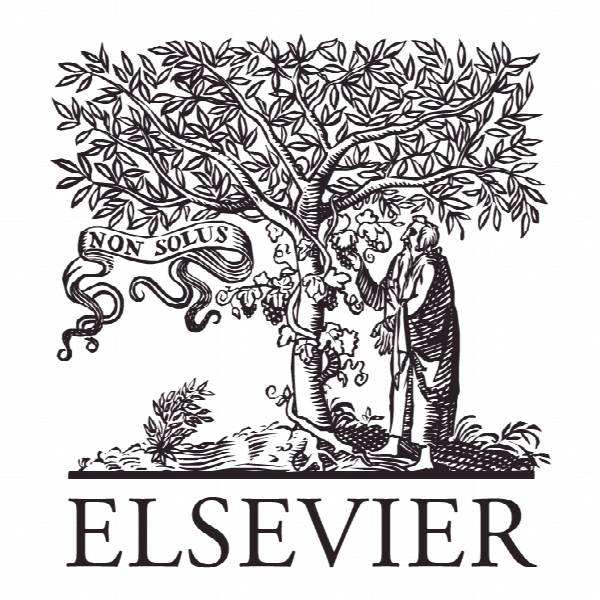هوش هیجانی و استرس درک شده توسط دانشجویان پزشکی پیش از ثبت نام: یک مطالعه مقطعی چند زمینه ای Emotional intelligence and perceived stress of Australian pre-registration healthcare students: A multi-disciplinary cross-sectional study
- نوع فایل : کتاب
- زبان : انگلیسی
- ناشر : Elsevier
- چاپ و سال / کشور: 2018
توضیحات
رشته های مرتبط روانشناسی
گرایش های مرتبط روانشناسی صنعتی و سازمانی
مجله آموزش پرستار امروزی – Nurse Education Today
دانشگاه Australian Catholic University & NorthWestern Mental Health – Australia
منتشر شده در نشریه الزویر
کلمات کلیدی انگلیسی Emotional intelligence, Nursing, Pharmacy, Dentistry, Perceived stress, Cross-sectional, Pre-registration students
گرایش های مرتبط روانشناسی صنعتی و سازمانی
مجله آموزش پرستار امروزی – Nurse Education Today
دانشگاه Australian Catholic University & NorthWestern Mental Health – Australia
منتشر شده در نشریه الزویر
کلمات کلیدی انگلیسی Emotional intelligence, Nursing, Pharmacy, Dentistry, Perceived stress, Cross-sectional, Pre-registration students
Description
1. Introduction Interpersonal work can be stressful for healthcare clinicians due to the emotional demands involved in caring for patients and their families (Ito et al., 2014) and the complex environments in which this work occurs (Hurley, 2008). Extended periods of emotional labour in pressured clinical settings is associated with negative outcomes including burnout and compassion fatigue (Berger et al., 2015), and decreased quality of patient care (McHugh et al., 2011). In their clinical placements, healthcare students are exposed to the realities of interpersonal work in demanding environments (Por et al., 2011). Students can experience high levels of stress associated with this work (Birks et al., 2009), as well as current life challenges and academic requirements (Pryjmachuk and Richards, 2007). Emotional intelligence (EI) involves the ability to perceive and effectively use self and others’ emotions, and to integrate emotion to facilitate thinking, and understand and regulate emotions to promote personal development (Birks et al., 2009). EI behaviours are essential for healthcare workers as they include the relational skills to effectively manage the interpersonal demands of practice (Mayer and Salovey, 1997). Increasing EI is an effective strategy to mediate stress and decrease burnout (Görgens-Ekermans and Brand, 2012). EI behaviourssuch as perceived emotional self-control and emotional competence have helped undergraduate nursing students manage stress and increase their subjective well-being (Por et al., 2011). Higher levels of EI are also associated with reduced stress in dentistry students (Pau et al., 2007) and better psychological health in pharmacy students (Othman et al., 2016). 2. Background EI comprises skills associated with distinguishing, understanding, managing and using emotions in self and others (Mayer and Salovey, 1997). Measures of EI ability capture maximal performance on skills associated with EI (Roberts et al., 2008), however, it has been argued that a measure of typical EI performance provides a more useful index, particularly when assessing EI skills in workplace settings (Gignac, 2010). The majority of EI research in healthcare has focused on nurses (Birks et al., 2009; Marvos and Hale, 2015). In nursing students, higher EI is associated with higher clinical and academic performance (Rankin, 2013), better practice performance (Beauvais et al., 2011) and improved patient healthcare outcomes (Quoidbach and Hansenne, 2009). EI has been investigated to a more limited extent with other healthcare students. In dental undergraduates, higher EI is associated with lower stress levels (Pau et al., 2007) and burnout (Görgens-Ekermans and Brand, 2012), and higher patient satisfaction (Azimi et al., 2010) and predicts subjective well-being (Montasem et al., 2013). In the UK, Birks et al. (2009) examined the relationship between EI and perceived stress (PS) in pre-registration students. Higher EI was significantly associated with lower PS. Schneider et al. (2013) propose that EI facilitates stress resilience but males and females may differ in the mechanisms by which this occurs. A number of factors, for example, self-efficacy (Yefei et al., 2016) and achievement motivation (Magnano et al., 2016), co-vary with EI and are likely to be involved or even mediate the relationship between EI and PS. EI has also EI has been positively related to age (Scheibe and Carstensen, 2010) with higher EI scores occurring in older adults. Birks et al. (2009), however, found no systematic gender or age differences on EI scores or on PS and no difference in EI scores across disciplines


